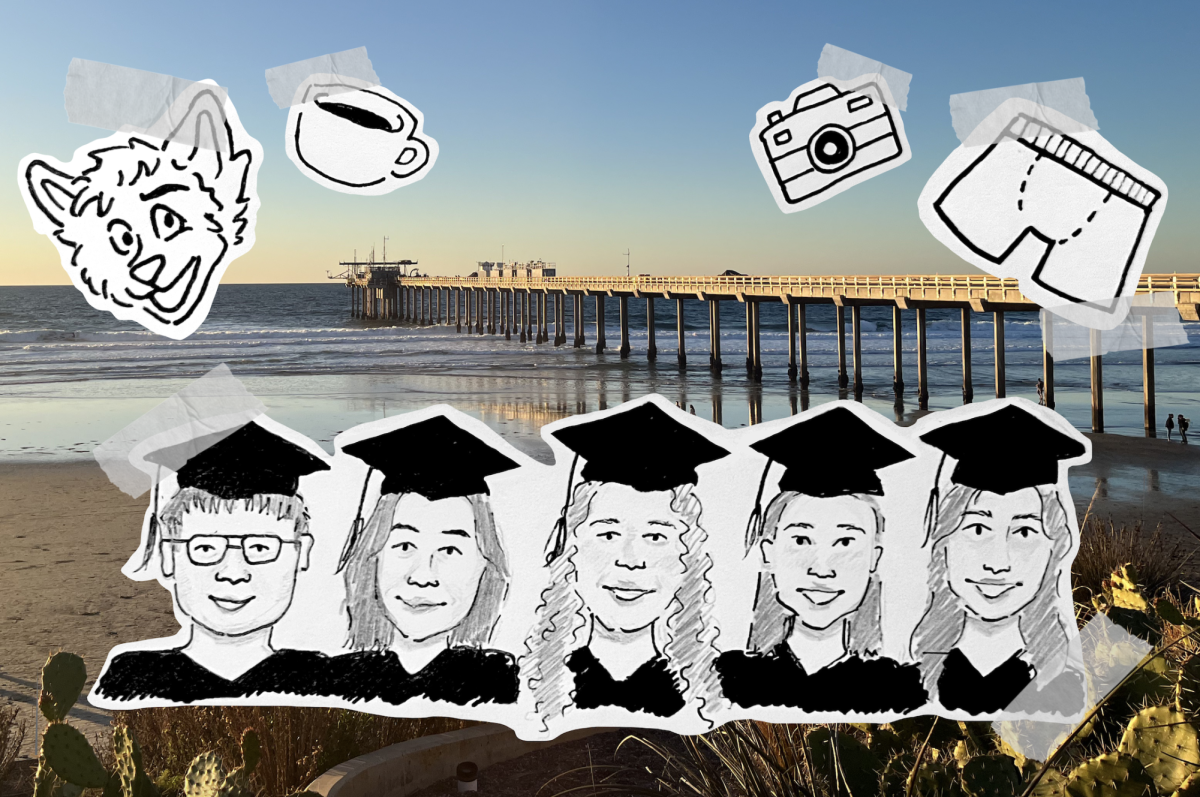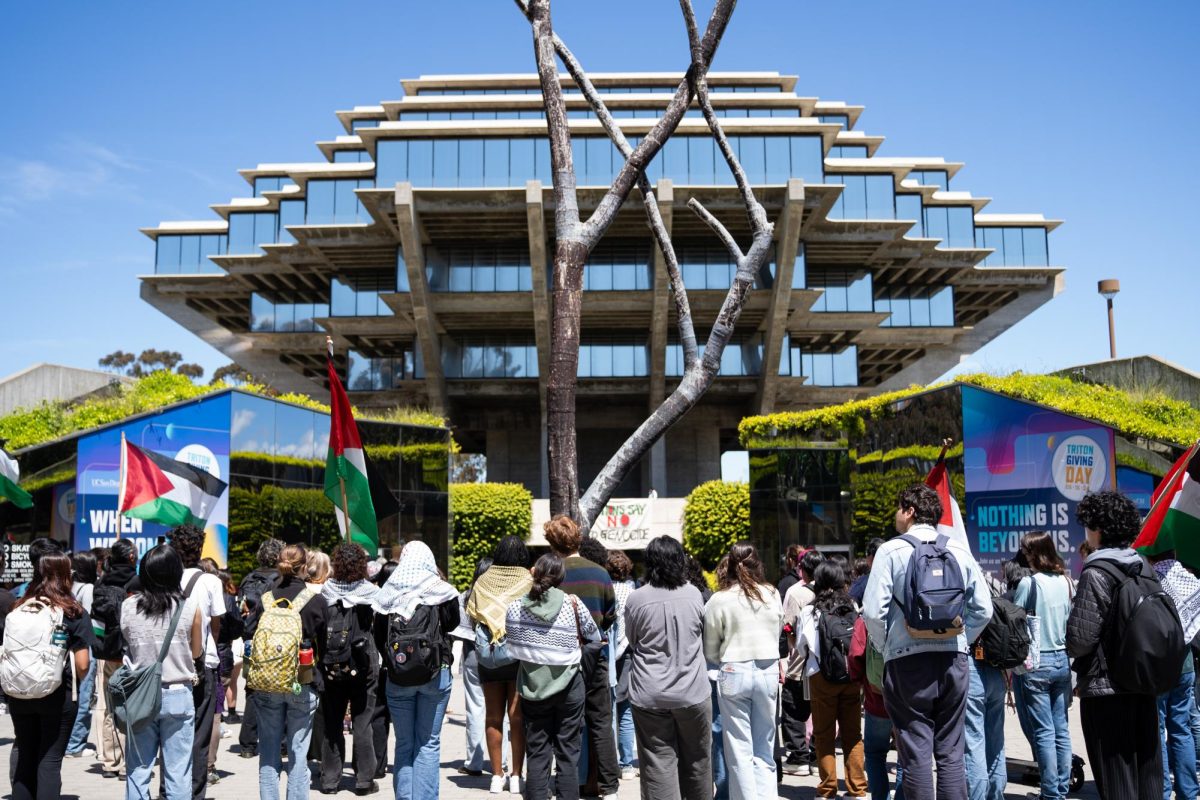Looking back, I can recall seeing a lot of half-naked men during my freshman year. They were everywhere in the dorms. Oddly enough, they all looked the same. I’m sure this was all probably part of the appeal, however.
The soulful look, those raging pecs, that chiseled jaw line — what could all these sexy traits share? The same white body for one thing, that and the fact that they are all signifiers of the mainstream definition of normality. OK, those naked guys weren’t for real — only scattered Abercrombie & Fitch magazine clippings on the adoring walls of most female dorms — but they might as well have been.
Abercrombie & Fitch is no stranger to controversy. In fact, it thrives on it, which only makes its corporate agenda all the more insidious. It’s obvious that the company believes in the cliche of advertising that any publicity, even the bad kind, is good publicity. Its most recent 15 minutes has confirmed what I had suspected about the company for years.
For anyone out of the loop, a couple of weeks ago Abercrombie launched its clothing line campaign, one that it claimed “”everyone would love, especially the Asian community.”” Apparently, someone at Abercrombie & Fitch thought that T-shirts with cartoon caricatures based on age-old racial stereotypes that poked fun at Asian-Americans (with such catchy slogans as “”Wong brothers laundry service: Two Wongs can make it white””) would “”add humor and levity to [their] fashion line.”” The images that complement these slogans are even less flattering, drawing from a laundry list of racist ideologies that have plagued Asian-Americans since their arrival in this country as early as the mid-19th century.
So why am I so upset over some harmless T-shirts? According to many scholars, Abercrombie’s campaign is just another example of an “”ideological assault”” toward people of color. Its ability to feign innocence and deny malicious intent speak of the enormous power that it has. Like most things, there is a precedent for this. The propagation of images defining “”the other”” by a more powerful elite is a hallmark in the history of U.S. racial domination. If you dominate someone, you need to create stories to justify their oppression. This is where pop culture, the media — and yes, even clothing — all come into play.
Hollywood has been instrumental in exercising this power of ideology beginning with the most popular form of entertainment during the 19th century, blackface minstrelsy. Asian-Americans have not been immune to an imposition of “”otherness”” by a Eurocentric oppressor, either. One need look no further than landmark films such as D.W. Griffith’s “”Broken Blossoms”” in which white actors in yellow-face act the part of the “”inscrutable Asian,”” complete with buck teeth and slanted eyes.
The neo-conservative milieu of the 21st century hasn’t fared much better than decades past, despite most people’s naive belief that we should now be a society beyond racism. Just look at the preponderance of Jackie Chan films that echo the same “”good”” Asian qualities in its protagonists such as submissiveness, loyalty and lack of sexuality that Charlie Chan films achieved more than half a century earlier.
Although the Civil Rights Movement made racism “”illegal,”” new and covert forms have surfaced in itsplace that hide behind the politically correct rhetoric of color-blind liberalism. As a result, the image of the pot-bellied, southern redneck continues to persist as the quintessential racist, even though the well-educated, ignorant person in a suit is a more accurate depiction.
The power of culture and the media cannot be underestimated. Advertising is particularly egregious. Then again, perhaps Abercrombie & Fitch should be applauded for its honesty. While other high-brow clothing lines are often subtler about their glorification of whiteness, Abercrombie & Fitch is at least completely open about it. Indeed in its notoriously “”soft-porn”” catalogs the entire white body is worshipped. Of course, to be fair, there is the token black guy — a shallow attempt at multiculturalism.
The entire issue of Abercrombie following the bandwagon of using exploitative slave labor — often from disenfranchised, poor immigrant labor from Asia and Latin America — is something I won’t even bother to explore but is worth mentioning.
History has shown time and again that racist ideologies have real-world consequences. Culture, although often deemed harmless, plays a pivotal role in circulating these unending discourses that pit Asian-Americans as “”forever foreigners.”” Most would see T-shirts as an almost laughable site on which to focus any serious debate. Clothing, where which brand you buy signifies the lifestyle you hope to emulate, is just as powerful in disseminating information as any other media source. Indeed, it is even more insidious because of its perceived innocence.
“”Saturday Night Live’s”” Lorne Michaels once said that comedy is “”criticism with charm.”” Abercrombie certainly has followed suit with this approach. The joke only works at the expense of a particular group, in this case, Asian-Americans and ultimately all people of color. You begin to wonder if Abercrombie & Fitch would have known how offensive its campaign was had it depicted the pickanninny stereotype of blacks, complete with watermelon and collard greens, on its shirts.
Its “”cute”” depictions of Chinese launders smiling away on shirts plays on the early 20th century stereotypes of Chinese immigrants who were restricted to domestic labor such as laundries as a result of racist U.S. hiring practices.
Through a comedic play on revisionist history, it perpetuates the false perception that Asian-Americans are “”naturally”” fitted for domestic labor and hopelessly unassimilable. This practice of essentializing nonessential qualities onto immigrant groups continues today with Mexican migrant workers.
As one of my professors pointed out, the Abercrombie & Fitch fiasco should not be seen as harmful because it portrays some sort of dramatic break from an otherwise raceless society, but because it is the most visible manifestation of a long chain of signifiers designed to reinforce existing hierarchies.
Like any instance of oppression, however, there has been resistance. Indeed, Asian-Americans were very quick to strike back, staging massive rallies across the nation and gaining equally effective media attention. There have also been more creative examples as well.
Fighting fire with fire, the folks at Blacklava have created their own mock Abercrombie T-shirts, complete with tongue-in-cheek slogans such as “”Artfulbigotry & Kitsch: Ignorance, racism, excuses since 2002.””
Nevermind that Asian-Americans were fundamental to the growth of this nation as a crucial source of industrial labor during the U.S. expansion to the West. Nevermind that most Asian-American communities were shaped in large part by anti-immigration laws and U.S. government policies that throughout history either explicitly or implicitly excluded them from the mainstream U.S. body politic. Abercrombie & Fitch certainly doesn’t give a damn.
But none of us should be that surprised. Social inequality is everywhere and race is but one aspect of it.
Until people of color come together and realize that their experiences are linked in the social construction of race in maintaining a hierarchy of power, racism will continue to hurt. And yes, even in clothing.







